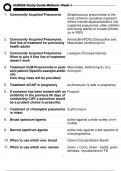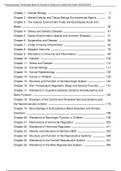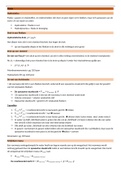Case Studies
• Stephen Lawrence
Lawrence was stabbed to death in London in the 1990’s beside a bus stop by a racist group
of White youths in an unprovoked attack. The Metropolitan Police Force failed to act
effectively (police and detectives) and were critiqued, named incompetent and
institutionally racism. The Lawrence family received £320,000 in compensation for the
police’s mediocre investigating skills.
• Damilola Taylor
In 2000, Taylor (age 10) died after being discovered bleeding out in a stairwell of a block of
flats due to a severed artery in his leg from a shard of glass. The CPS failed to investigate the
case thoroughly, missing the defendant’s usage of mobile phones near the crime scene with
was vital evidence for a conviction.
• Amanda Knox
An American activist, journalist and author. She was wrongfully accused of the murder of
Meredith Kercher who was a fellow exchange student who she shared an apartment with, in
Perugia. DNA evidence was found on the weapon which was a kitchen knife and on the
victims' bra. However, the DNA found was too small to be used convincingly.
• Barry George
Barry was a British man who liked guns, he had a long criminal history. He was convicted of
of the murder of English television presenter Jill Dando. This was due to having a long history
of stalking women, sexual offences and other antisocial and attention seeking behaviour.
Police put Barry under surveillance and later arrested him. A single microscopic particle of
potential gunshot residue was found on Barry (trace evidence). His jacket may had been
contaminated by the armed police during his arrest.
• Colin Stagg
An innocent man who was hounded and hunted by the police as a suspect of the murder of
Rachel Nickell on Wimbledon Common. The newspapers hounded him, saying ‘no girl is
safe,’ and ‘murdered as her little boy watched.’ The police used a honey-trap, covert
surveillance where a female officer befriended Stagg and became his girlfriend to try and
encourage him to admit his guilt. The police’s approach was unethical, and the case was
thrown out, Stagg received £700,000 in compensation.
• Sally Clark
A mother of 2 who was wrongfully convicted of their murders, even though their deaths
were caused by SIDS. Her 2 infant children both died, and she received a life in prison
sentence. She was imprisoned due to Sir Roy Meadows incorrect figures which were
presented in court, convincing the jury that she was guilty. Roy Meadows was an ‘expert
witness’ who suggested that there was a 1 in 73 million chance that both children died due
to SIDS. There was no statistical basis for these figures and knowledge was withheld in the
courtroom. The true statistic was that 5 families per year would suffer a cot death.
• Anthony Hardy
, He murdered 3 women after the first murder was not investigated properly. It was
determined by pathologists (Freddy Patel) his first victim died of natural causes even though
there were obvious signs of foul play. This mistake allowed him to go on and kill 2 more
women, this pathologist also made mistakes in the case of Ian Tomlinson.
• Colin Pitchfork
Murdered 2 girls in the 1980’s and was convicted in 1986. He was the first person to be
convicted of rape and murder using DNA profiling after he murdered 2 young girls. Blood
samples were taken from 4,583 men and he was a DNA match for that found on the scene.
Semen samples were also found on the scene, and it was identified to have come from the
same offender through Jeffrey’s DNA profiling developments, linking Pitchfork to both
crimes.
• Ronald Cotton
An innocent man who was imprisoned for rape due to a false identification in a lineup by an
eyewitness. He was imprisoned for 10 years and was cleared using DNA evidence which
proved he had been misidentified. His case is also heavily influenced by racism due to the
time in which it occurred.
• Stephen Downing
Stephen was accused and convicted of the murder of Wendy Sewell. Stephen made a
confession which he later withdrew due to his lawyer not been present, his confession was
unsafe due to him being questioned for 8 hours straight. The police reportedly shook him
and pulled his hair to keep him awake. Stephen also had a learning disability and was
unfairly treated, leading to forced confession. He was imprisoned for 27 years anyway.
• Russel Bishop
Murdered two 9-year-old girls and was found guilty in a second trial. Due to advancements
in the DNA technology, new evidence of skin flakes were found on the girls' bodies which
weren’t detectable previously and forensically linked Bishop to the murder after he had
gotten away with it for multiple years.
• Sarah Payne
At 8 years old, Sarah was abducted and murdered by Roy Whiting not far from her
grandparent's seaside home. She was abducted whilst playing outside with her siblings in a
corn field. Sarah was abducted by Roy Whiting in his van, where a singular blonde strand of
hair was found with the root still connected and a t-shirt. In the root was fibres from one of
Roy’s jumpers. Roy was convicted after this evidence was presented in court.
• Harry Jackson
In 1902, Harry Jackson was arrested for multiple burglaries and was the first person to be
convicted of a crime using fingerprint identification. An officer on scene initially at the home
noticed fingerprints on a freshly painted window frame, he compared the fingerprints to all
the household members and then began comparing it to local criminals who had previous
burglary convictions. The patent prints matched Harry Jackson, and he was convicted of the
crime.











